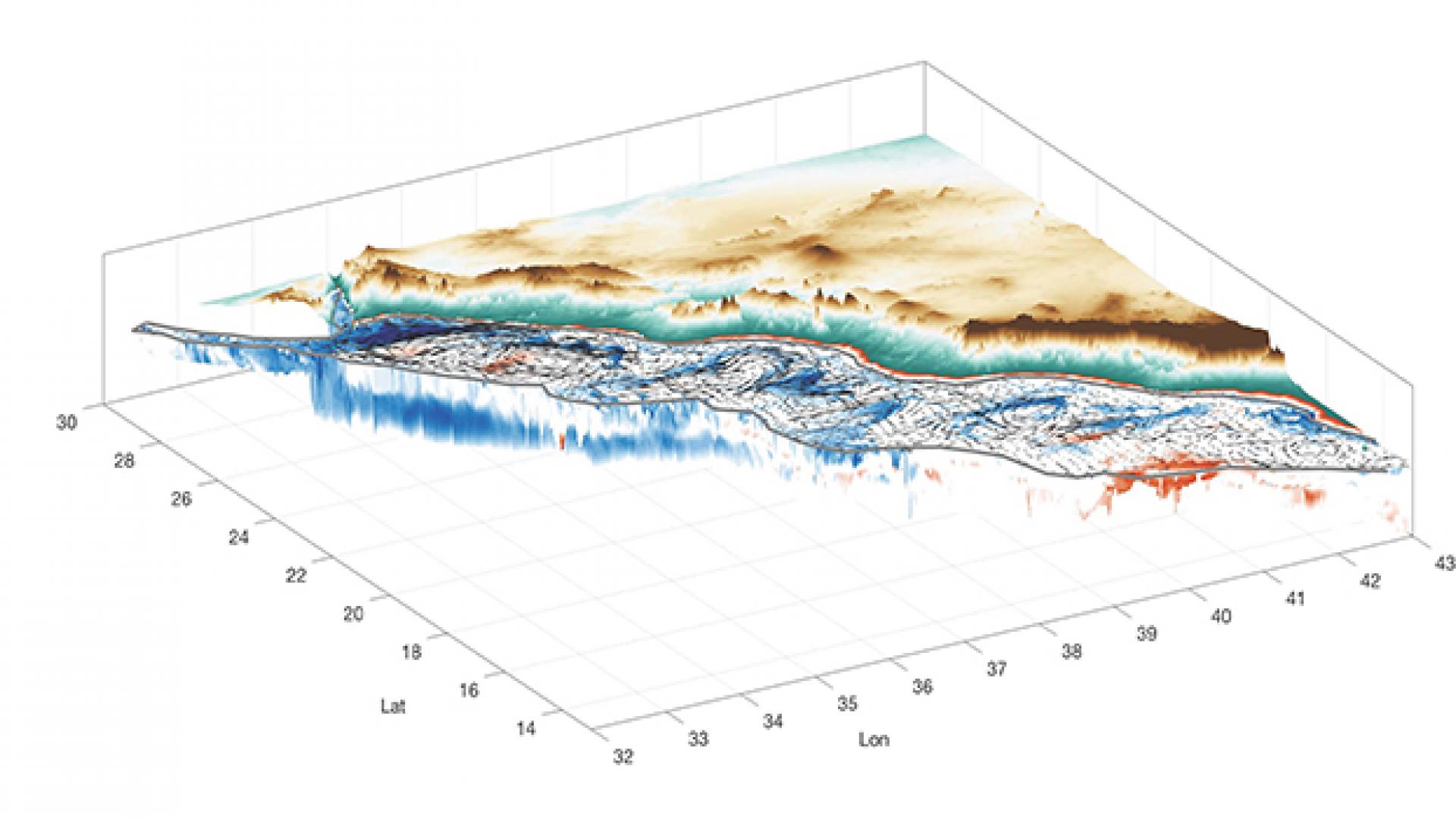© 2019 KAUST
A study of eddy-induced transport of energy and biochemical particles and its influences on circulation patterns in the Red Sea reveals a mechanism that balances fluctuations in both salt and heat in the basin.
Mesoscale eddies, often described as the weather of the ocean, are 3D structures typically hundreds of kilometers wide and hundreds of meters deep. They are characterized by temperature, salinity and flow properties that differ to the surrounding water, enabling them to transport energy and materials around the ocean.
Although the circulation of the Red Sea is distinguished by a large number of mesoscale eddies, little is known about their 3D structures.
Led by Ibrahim Hoteit, Peng Zhan and colleagues at KAUST are investigating eddies circulating in the Red Sea.
“Ocean eddies are usually faster flowing compared with mean ocean circulation and therefore contribute significantly to the transport of energy and materials,” says Zhan. “Studying three-dimensional eddy-induced transport will deepen our understanding of the circulation of the Red Sea and identify the important role that eddies play in both horizontal and vertical transport and air-sea interactions.”
The team used the Massachusetts Institute of Technology general circulation model (MITgcm), specifically configured to cover the entire Red Sea. This meant they could simulate dynamics of the Red Sea spanning a 14-year period from 2001-2014 with sufficient spatial and temporal resolution to resolve mesoscale eddies, allowing them to investigate their 3D characteristics.
They found that eddy-induced transport is more active in the central and northern Red Sea. They also found that variability in eddies accounted for around 8 percent of the total variance in the surface heat flux and for about 39 percent in the salt flux.
“These are the regions where heat, salt and biogeochemical particles are more likely to be dispersed and promote the regional exchange of energy and materials,” explains Zhan.
Read the full article

